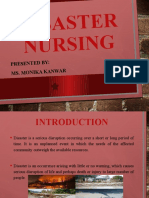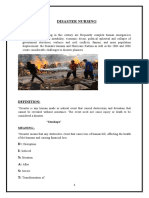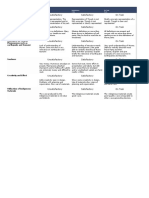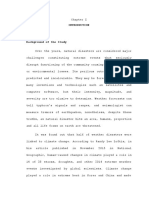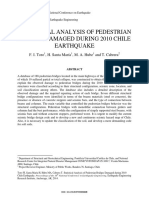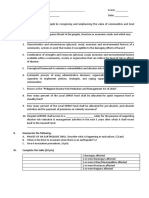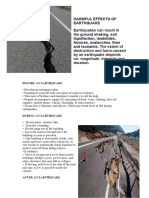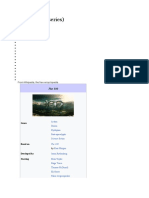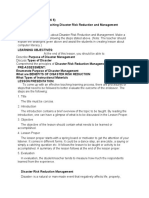0% found this document useful (0 votes)
7 views3 pages121 Lecture
The document outlines various natural and manmade disasters, detailing their characteristics and impacts. It describes the phases of disaster management, including mitigation, preparedness, response, and recovery, as well as the critical role of nurses in managing disaster victims. Additionally, it highlights the different reactions of children and the elderly during disasters and emphasizes the principles of triage and effective disaster management.
Uploaded by
maryannsacramento551Copyright
© © All Rights Reserved
We take content rights seriously. If you suspect this is your content, claim it here.
Available Formats
Download as DOCX, PDF, TXT or read online on Scribd
0% found this document useful (0 votes)
7 views3 pages121 Lecture
The document outlines various natural and manmade disasters, detailing their characteristics and impacts. It describes the phases of disaster management, including mitigation, preparedness, response, and recovery, as well as the critical role of nurses in managing disaster victims. Additionally, it highlights the different reactions of children and the elderly during disasters and emphasizes the principles of triage and effective disaster management.
Uploaded by
maryannsacramento551Copyright
© © All Rights Reserved
We take content rights seriously. If you suspect this is your content, claim it here.
Available Formats
Download as DOCX, PDF, TXT or read online on Scribd
/ 3













